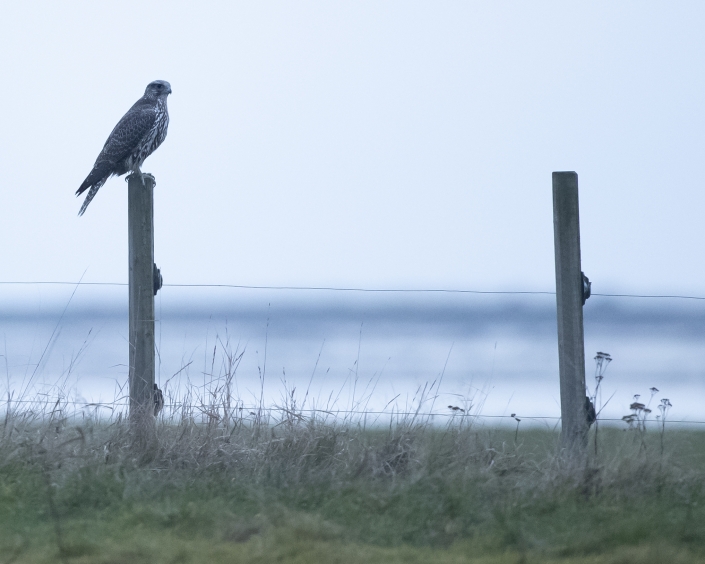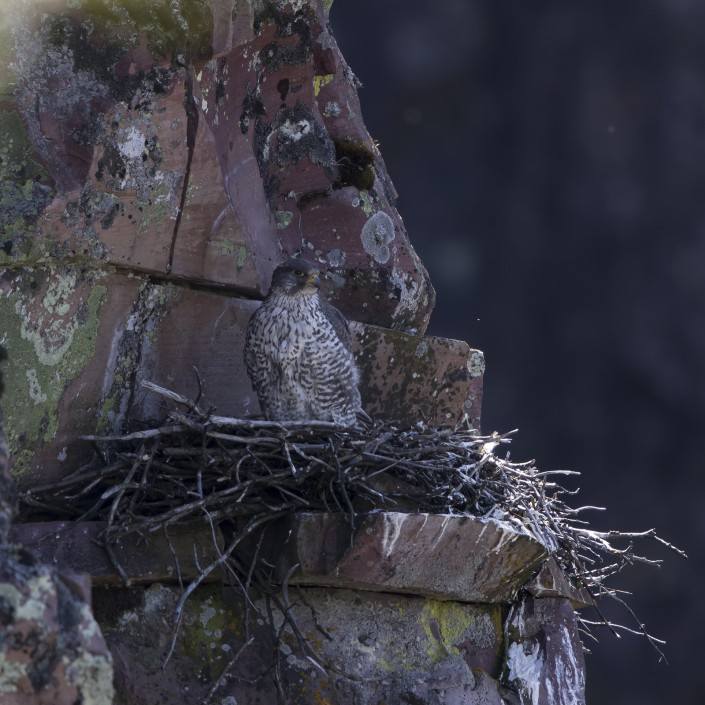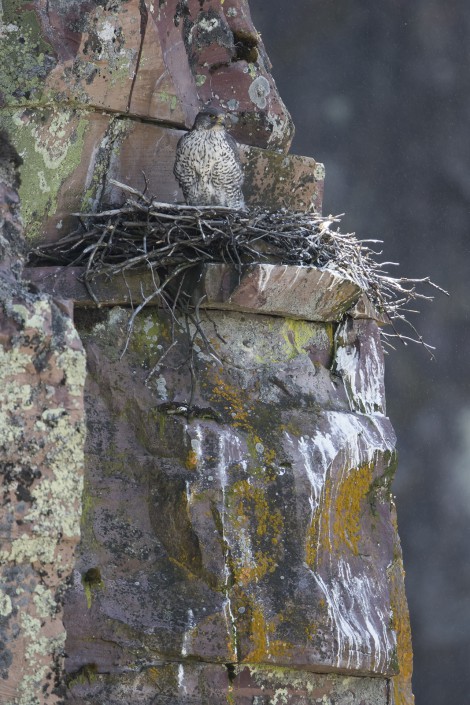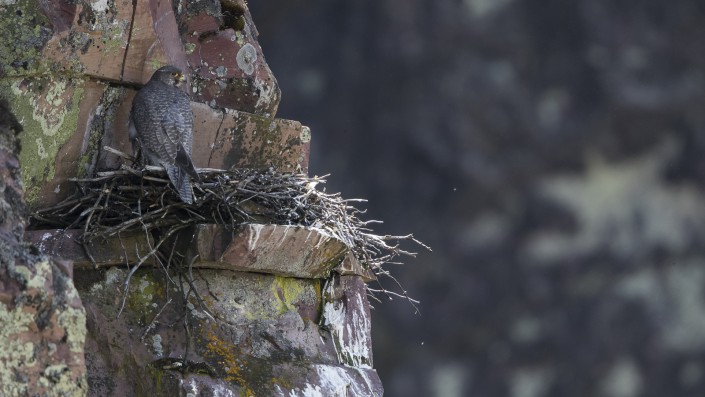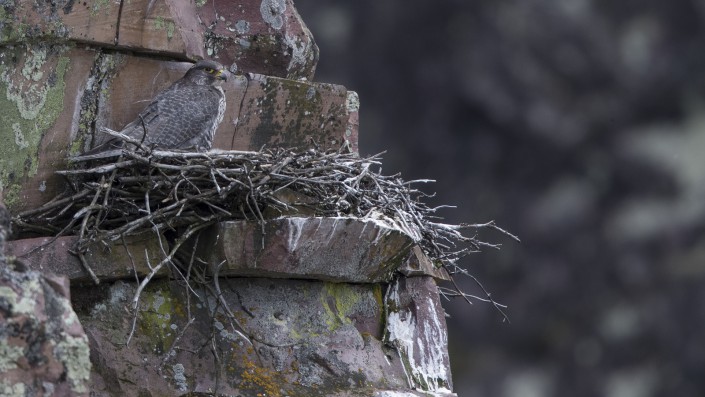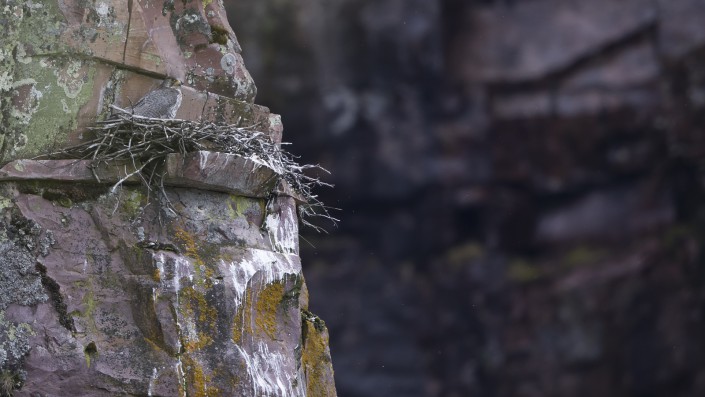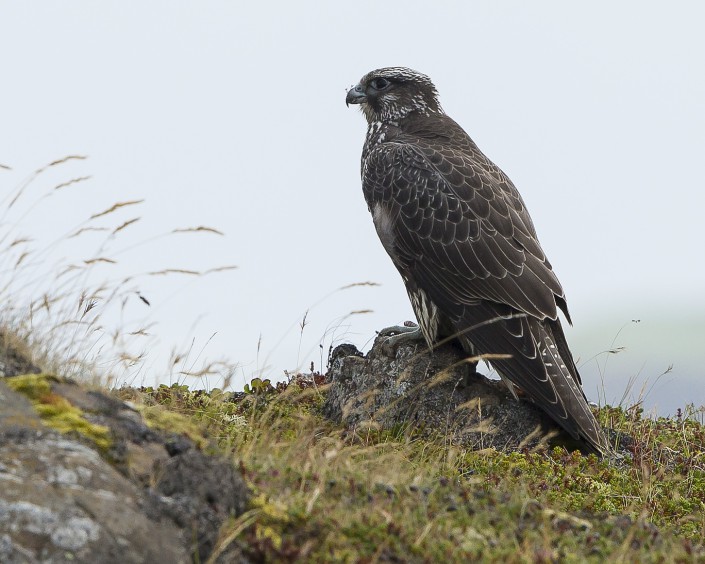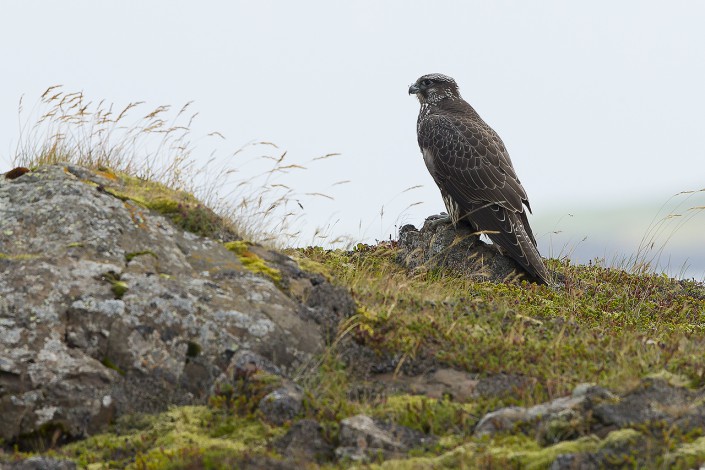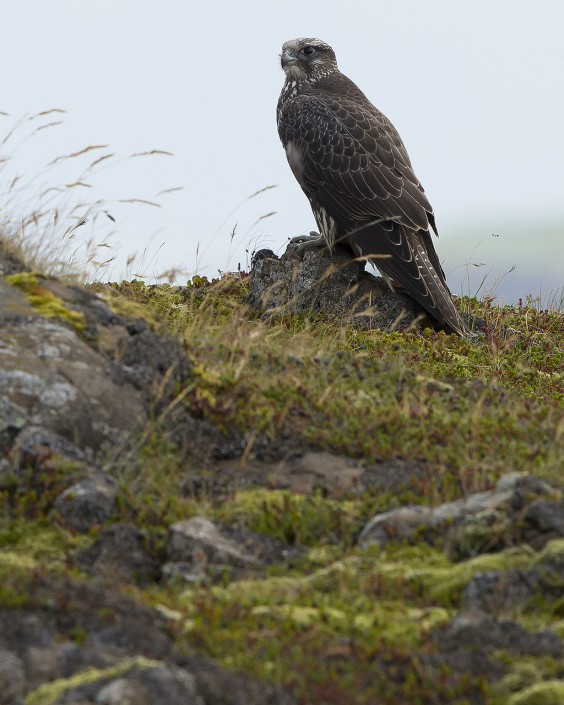This post is also available in: Swedish
Gyrfalcon – Falco rusticolus
Gyrfalcon – Falco rusticolus
also spelled gerfalcon, is a bird of prey, the largest of the falcon species. The abbreviation gyr is also seen in the literature. It breeds on Arctic coasts and tundra, and the islands of northern North America, Europe, and Asia. It is mainly a resident there also, but some gyrfalcons disperse more widely after the breeding season, or in winter. Individual vagrancy can take birds for long distances. Its plumage varies with location, with birds being coloured from all-white to dark brown. These colour variations are called morphs. The gyrfalcon is a very large falcon, being about the same size as the largest buteos (buzzard hawks). Males are 48 to 61 cm (19 to 24 in) long, weigh 805 to 1,350 g (1.775 to 2.976 lb) and have a wingspan from 110 to 130 cm (43 to 51 in). Females are bulkier and larger, at 51 to 65 cm (20 to 26 in) long, 124 to 160 cm (49 to 63 in) wingspan, and of 1,180 to 2,100 g (2.60 to 4.63 lb) weight The gyrfalcon almost invariably nests on cliff faces. Breeding pairs do not build their own nests, and often use a bare cliff ledge or the abandoned nest of other birds, particularly golden eagles and common ravens. The clutch can range from 1 to 5 eggs, but is usually 2 to 4. The average size of an egg is 58.46 mm × 45 mm (2.302 in × 1.772 in); the average weight is 62 g (2.2 oz). The incubation period averages 35 days, with the chicks hatching at a weight of around 52 g (1.8 oz). The nestlings are brooded usually for 10 to 15 days and leave the nest at 7 to 8 weeks. At 3 to 4 months of age, the immature gyrfalcons become independent of their parents, though they may associate with their siblings through the following winter.
The only natural predators of gyrfalcons are golden eagles, and even they rarely engage with these formidable falcons.
It sounds like this
Recording by Andrew Spencer from Xeno canto



